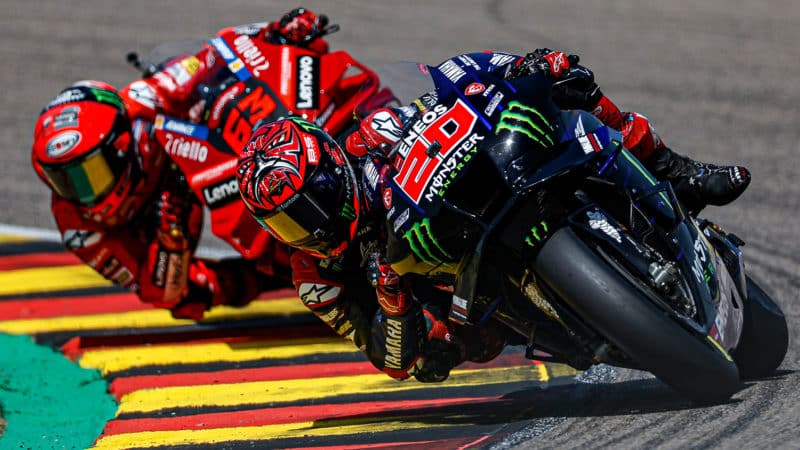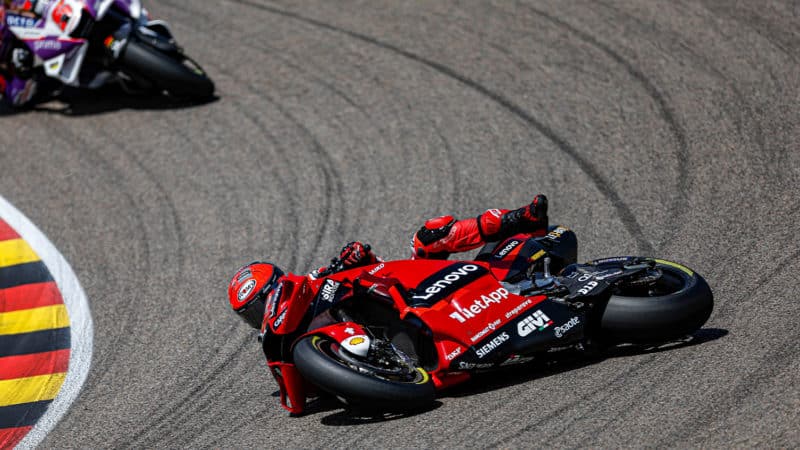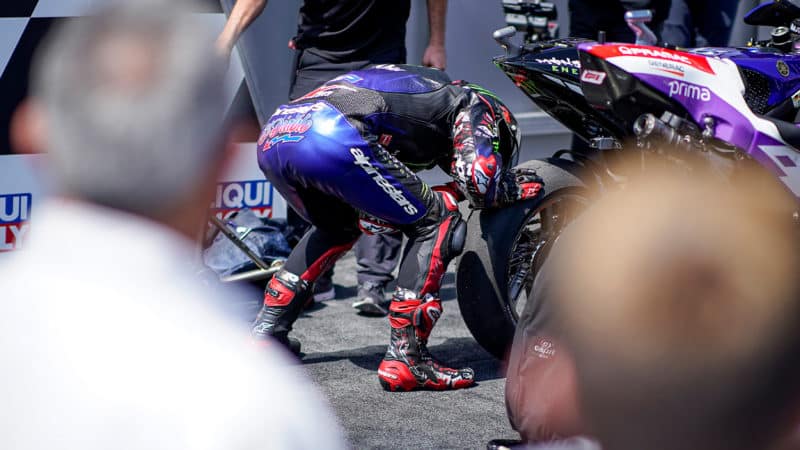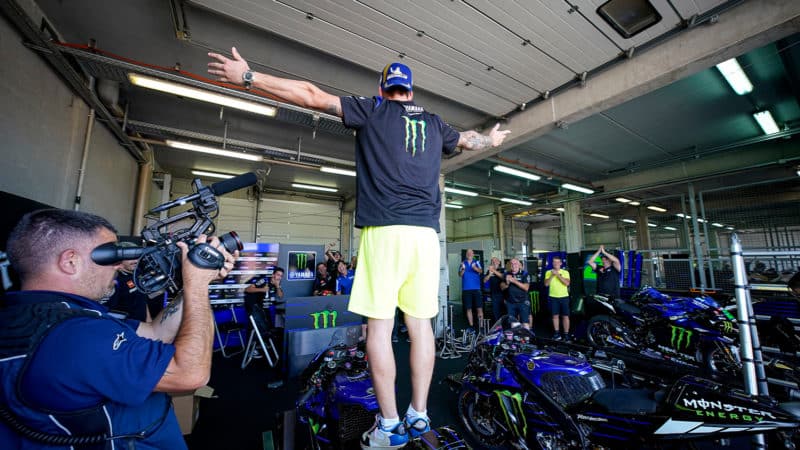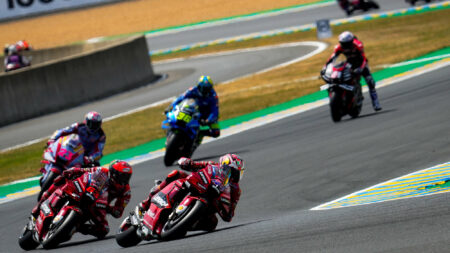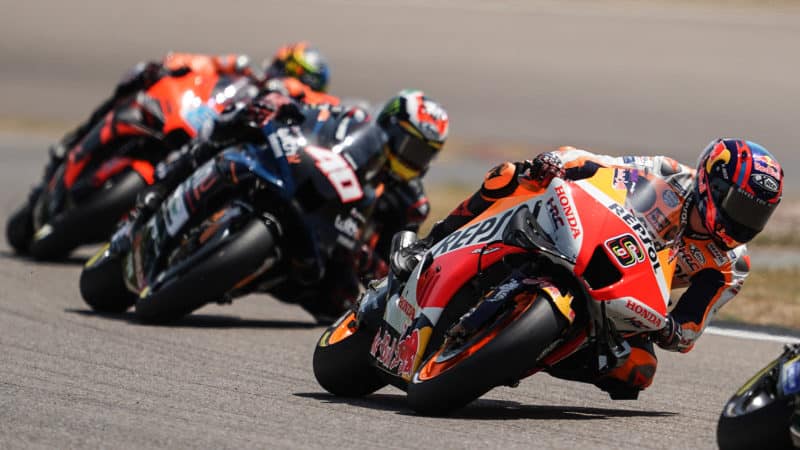This time he was a bit more worried about his rear tyre – choosing the medium instead of the hard – but not for too long. “At first I was little bit scared because I was using more of the rear tyre than I expected to ride fast,” he said.
Once again Quartararo’s crew chief Diego Gubellini had made the right call on tyre choice and his rider was utterly perfect, the blue Márquez taking over from the orange Márquez as king of the ’Ring. Quartararo is currently riding the crest of a wave, building confidence each weekend and still improving as a rider in his fourth season in the class of kings. I think we have yet to see his best, which is ominous for the rest.
Now, with ten of 20 races done Quartararo has a 34-point lead over Aleix Espargaró, who on Sunday lost third place to Bagnaia’s team-mate Jack Miller, after a long tussle.
The weather at Sachsenring was vicious, more like the Suzuka 8 Hours than a German GP. The burning heat, at the centre of a European heatwave, destroyed all the riders physically and mentally, so I think Miller spoke for everyone when he said to second-placed Johann Zarco, “You look in a bad way, mate,” before they climbed the podium.
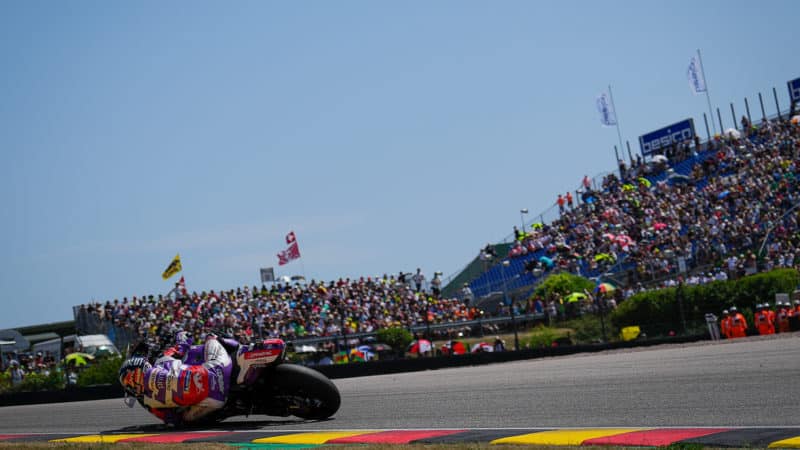
MotoGP’s unsung hero Zarco is now third overall and top Ducati
Dorna
Although Yamaha’s M1 isn’t the neutral, rider-friendly machine it once was, perhaps it is more rider-friendly than Ducati’s Desmosedici, never mind the amazing work done by Ducati engineers in recent years. At the end of Saturday qualifying there were six Ducatis in the top eight, but one fast lap doesn’t make a race.
Zarco, MotoGP’s unsung hero, now third in the championship and top Ducati, agrees that the Desmosedici isn’t an easy ride.
“I can be fast on the Ducati but not super-relaxed and enjoying every moment, I am fighting on the bike,” said the Frenchman. “I am fast enough but if I can make the bike easier it will be much better for all the races.”
“I just waited until they struggled with the rear… I tried to be smart and clever”
Fourth-placed Espargaró was convinced he had a faulty front tyre, otherwise he was sure he could’ve gone with Zarco. At the finish he was just over two seconds clear of Luca Marini, having by far his best race in MotoGP.
While his big brother finished 16th in the GT World Challenge car race at Zandvoort in the Netherlands, Marini had the pace for his first MotoGP podium, but a third-row start held him back in the early stages.
“At the beginning of the season we had a new team, a new crew and a new bike, so we struggled,” explained the VR46 Ducati rider. “But now we have a good base setting, my confidence is better at every race and today was the first time I had the potential to make the podium.
“After the start it’s impossible to overtake here, so I was managing the rear tyre but the others didn’t think about this, so they were exiting corners with a lot of gas, a lot of slides, so I just waited until they struggled with the rear… I tried to be smart and clever.
This is the Marini way: lots of thinking and steady forward progress, rather than big handfuls of throttle and throwing his motorcycle at the scenery. Expect the forward progress to continue.
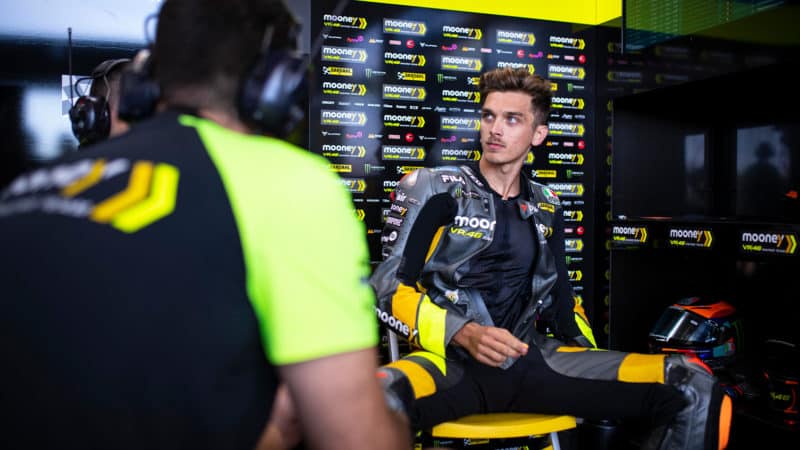
Marini is a thinker – he only goes fast when he’s ready and he seems ready now
VR46
However, no one in MotoGP needs forward progress right now like Honda. The company didn’t score a single championship point on Sunday, the first time that’s happened since the days of the oval-piston NR500 four-stroke in late 1981, when Honda was fighting a Quixotic battle with the all-powerful two-strokes.
The following year Honda realised that if it couldn’t beat them it must join them, so it built the NS500 two-stroke triple, which won Honda’s first premier-class championship in 1983.
Honda has had dark days in MotoGP before, with its ‘upside-down’ (fuel tank under the engine, exhausts over the top] NSR500 in 1984, but then it had the NS500 to fall back on. In 1985 it built a more conventional NSR500, which went on to become the most successful motorcycle in history.

